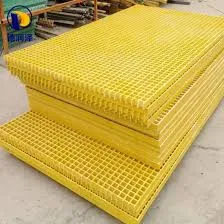
-
 Afrikaans
Afrikaans -
 Albanian
Albanian -
 Amharic
Amharic -
 Arabic
Arabic -
 Armenian
Armenian -
 Azerbaijani
Azerbaijani -
 Basque
Basque -
 Belarusian
Belarusian -
 Bengali
Bengali -
 Bosnian
Bosnian -
 Bulgarian
Bulgarian -
 Catalan
Catalan -
 Cebuano
Cebuano -
 China
China -
 China (Taiwan)
China (Taiwan) -
 Corsican
Corsican -
 Croatian
Croatian -
 Czech
Czech -
 Danish
Danish -
 Dutch
Dutch -
 English
English -
 Esperanto
Esperanto -
 Estonian
Estonian -
 Finnish
Finnish -
 French
French -
 Frisian
Frisian -
 Galician
Galician -
 Georgian
Georgian -
 German
German -
 Greek
Greek -
 Gujarati
Gujarati -
 Haitian Creole
Haitian Creole -
 hausa
hausa -
 hawaiian
hawaiian -
 Hebrew
Hebrew -
 Hindi
Hindi -
 Miao
Miao -
 Hungarian
Hungarian -
 Icelandic
Icelandic -
 igbo
igbo -
 Indonesian
Indonesian -
 irish
irish -
 Italian
Italian -
 Japanese
Japanese -
 Javanese
Javanese -
 Kannada
Kannada -
 kazakh
kazakh -
 Khmer
Khmer -
 Rwandese
Rwandese -
 Korean
Korean -
 Kurdish
Kurdish -
 Kyrgyz
Kyrgyz -
 Lao
Lao -
 Latin
Latin -
 Latvian
Latvian -
 Lithuanian
Lithuanian -
 Luxembourgish
Luxembourgish -
 Macedonian
Macedonian -
 Malgashi
Malgashi -
 Malay
Malay -
 Malayalam
Malayalam -
 Maltese
Maltese -
 Maori
Maori -
 Marathi
Marathi -
 Mongolian
Mongolian -
 Myanmar
Myanmar -
 Nepali
Nepali -
 Norwegian
Norwegian -
 Norwegian
Norwegian -
 Occitan
Occitan -
 Pashto
Pashto -
 Persian
Persian -
 Polish
Polish -
 Portuguese
Portuguese -
 Punjabi
Punjabi -
 Romanian
Romanian -
 Russian
Russian -
 Samoan
Samoan -
 Scottish Gaelic
Scottish Gaelic -
 Serbian
Serbian -
 Sesotho
Sesotho -
 Shona
Shona -
 Sindhi
Sindhi -
 Sinhala
Sinhala -
 Slovak
Slovak -
 Slovenian
Slovenian -
 Somali
Somali -
 Spanish
Spanish -
 Sundanese
Sundanese -
 Swahili
Swahili -
 Swedish
Swedish -
 Tagalog
Tagalog -
 Tajik
Tajik -
 Tamil
Tamil -
 Tatar
Tatar -
 Telugu
Telugu -
 Thai
Thai -
 Turkish
Turkish -
 Turkmen
Turkmen -
 Ukrainian
Ukrainian -
 Urdu
Urdu -
 Uighur
Uighur -
 Uzbek
Uzbek -
 Vietnamese
Vietnamese -
 Welsh
Welsh -
 Bantu
Bantu -
 Yiddish
Yiddish -
 Yoruba
Yoruba -
 Zulu
Zulu
frp car
The Rise of FRP Cars A Revolutionary Shift in Automotive Technology
In recent years, the automotive industry has witnessed a remarkable transformation with the introduction of Fiber Reinforced Polymer (FRP) cars. This innovative material is changing the game for car manufacturers and consumers alike, pushing the boundaries of design, performance, and sustainability.
FRP, known for its lightweight and durable properties, has garnered significant attention due to its potential to reduce vehicle weight while maintaining strength and rigidity. Traditional materials like steel and aluminum, although widely used, come with their limitations, often resulting in heavier vehicles that consume more fuel and emit more pollutants. The adoption of FRP in car manufacturing is paving the way for more efficient and environmentally friendly vehicles.
.
Moreover, FRP offers exceptional corrosion resistance. Unlike metals that can rust and degrade over time, FRP is impervious to environmental factors, enhancing the longevity of vehicles that utilize this material. This not only reduces maintenance costs for consumers but also contributes to the overall sustainability of the automotive industry. As more manufacturers prioritize longevity and reliability, FRP stands out as a superior choice for vehicle construction.
frp car

The design flexibility that FRP provides is another noteworthy aspect. FRP can be molded into complex shapes that would be challenging or impossible to achieve with traditional materials. This capability allows automotive designers to create sleek, aerodynamic vehicles that not only look good but also perform better. The modern consumer is increasingly interested in unique and aesthetically pleasing designs, and FRP allows manufacturers to meet this demand effectively.
However, the benefits of FRP are not confined to efficiency and aesthetics; they also extend to performance. The inherent strength of FRP allows for the design of vehicles that can withstand greater forces without sacrificing weight. This is particularly advantageous in the realm of high-performance cars, where every ounce counts. Manufacturers can create lighter, faster vehicles that still have the robustness needed for high-speed driving and safety.
Despite these advantages, the transition to FRP cars is not without challenges. The production of FRP can be more complex and costly than traditional materials, which may deter some manufacturers from making the switch. Additionally, while advancements in recycling technologies are being made, the recycling of FRP materials remains a concern, as many current methods are not yet viable for large-scale automotive applications. However, as technology continues to evolve, these challenges are likely to be addressed, making FRP an even more attractive option.
The automotive industry is witnessing a trend towards sustainability, and FRP aligns perfectly with this movement. As regulations around emissions tighten globally, manufacturers are seeking innovative solutions to meet these standards. By adopting FRP, automakers can produce vehicles that are not only lighter and more efficient but also significantly less harmful to the environment.
In conclusion, FRP cars represent a significant advancement in automotive technology, offering a combination of lightweight durability, design flexibility, and performance excellence. While there are still hurdles to overcome, the potential benefits of using FRP in vehicle manufacturing are undeniable. As the industry continues to evolve towards a more sustainable future, the widespread adoption of FRP could play a pivotal role in shaping the next generation of vehicles. The future of transportation is on the horizon, and with it comes a new era of innovation driven by materials like Fiber Reinforced Polymer.
Latest news
-
Exploring the Benefits of Top Hammer Drifter Rods for Enhanced Drilling PerformanceNewsJun.10,2025
-
High-Precision Fiberglass Winding Machine for GRP/FRP Pipe Production – Reliable & Efficient SolutionsNewsJun.10,2025
-
FRP Pipes & Fittings for Shipbuilding - Corrosion-Resistant & LightweightNewsJun.09,2025
-
Premium FRP Flooring Solutions Durable & Slip-ResistantNewsJun.09,2025
-
Premium Fiberglass Rectangular Tanks Durable & Lightweight SolutionNewsJun.09,2025
-
Tapered Drill String Design Guide Durable Performance & UsesNewsJun.09,2025









